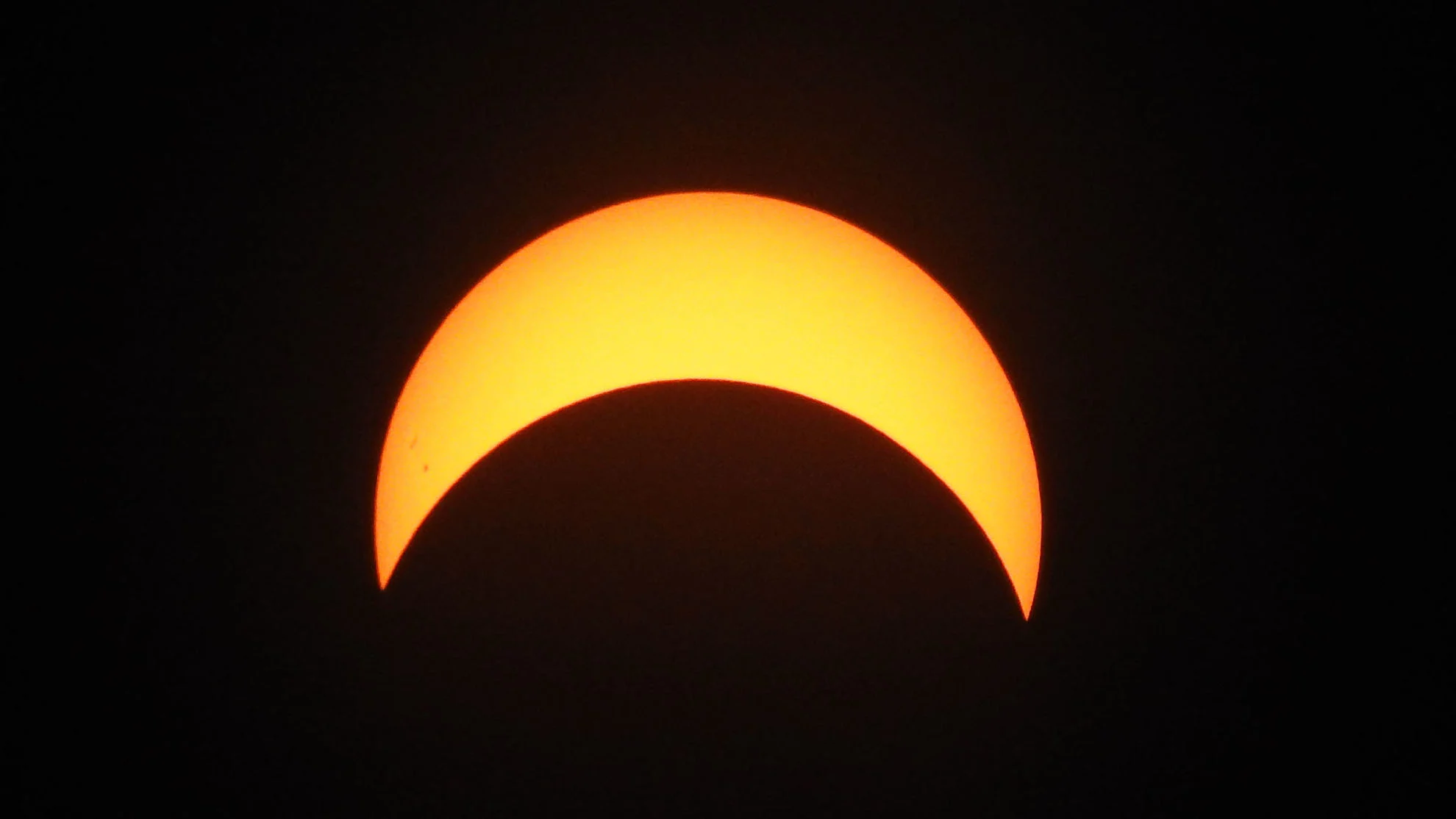
Look up! Canada will be treated to a partial solar eclipse on Saturday
Here's how to see the October 14, 2023 Annular Solar Eclipse from anywhere across Canada, rain or shine!
The highly anticipated 2023 Annular Solar Eclipse is nearly here!
Throughout the day on October 14, 2023, the Sun, Moon, and Earth will line up perfectly to produce a solar eclipse.
Observers will have an extraordinary view along a path from Oregon to Texas in the United States, as well as south across the Yucatan Peninsula, through Belize, Honduras, Nicaragua, Costa Rica, Panama, Colombia, and northern Brazil. From there, they will have a chance to witness the Sun and Moon form a "ring of fire" eclipse.
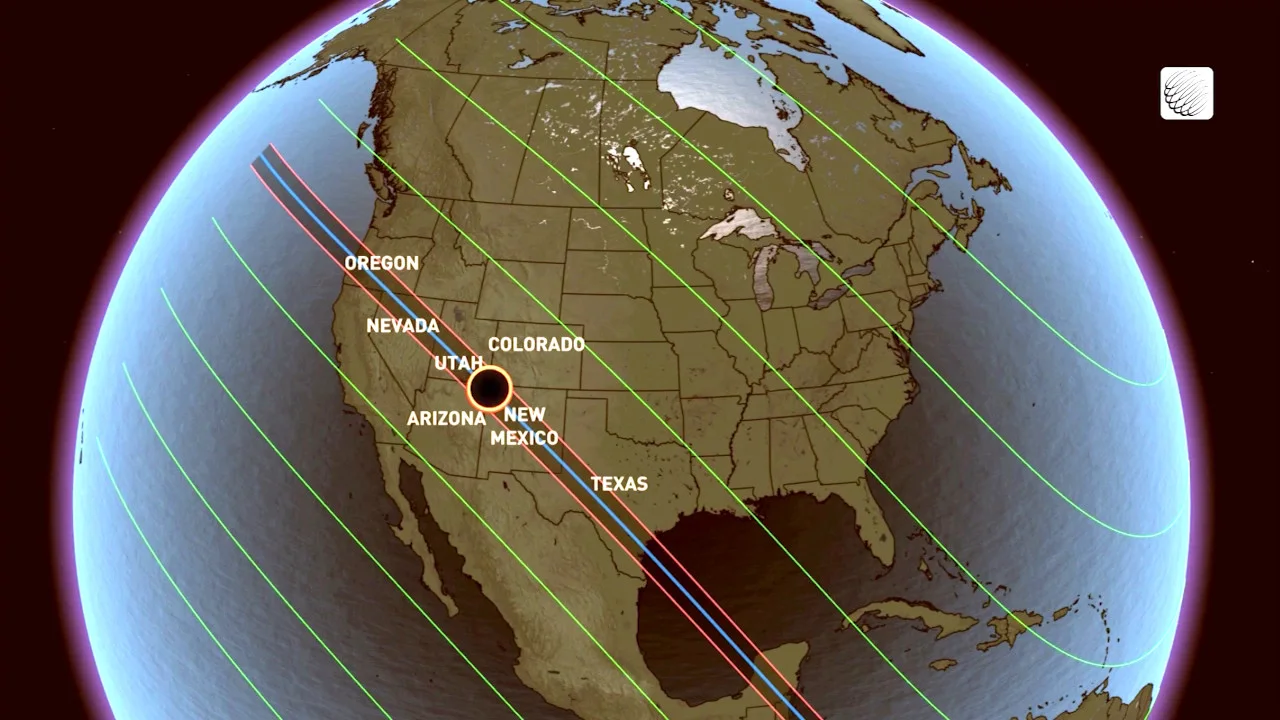
Meanwhile, from coast to coast across Canada, viewers will have a chance to see a partial solar eclipse.
Observing the event from Vancouver Island or the south coast of British Columbia on the morning of Oct. 14 gives the viewer the greatest amount of the Sun covered by the Moon — from Canada, at least — at a little over 80 per cent.
The eclipse happens at one specific time, starting around 15 UTC (11 EDT/8 PDT) on Saturday. However, due to the exact viewing angle of the Sun and Moon in the sky, and our different time zones, the farther east or north an observer is, the later the event will begin, peak, and end during the day.
Also, the farther east or north you are, the less the Moon will cover the Sun. Although over 80 per cent will be covered, at maximum, when viewed from southwestern B.C., that dwindles down to Less than 10 per cent coverage as seen from locations on the island of Newfoundland and up near Iqaluit.
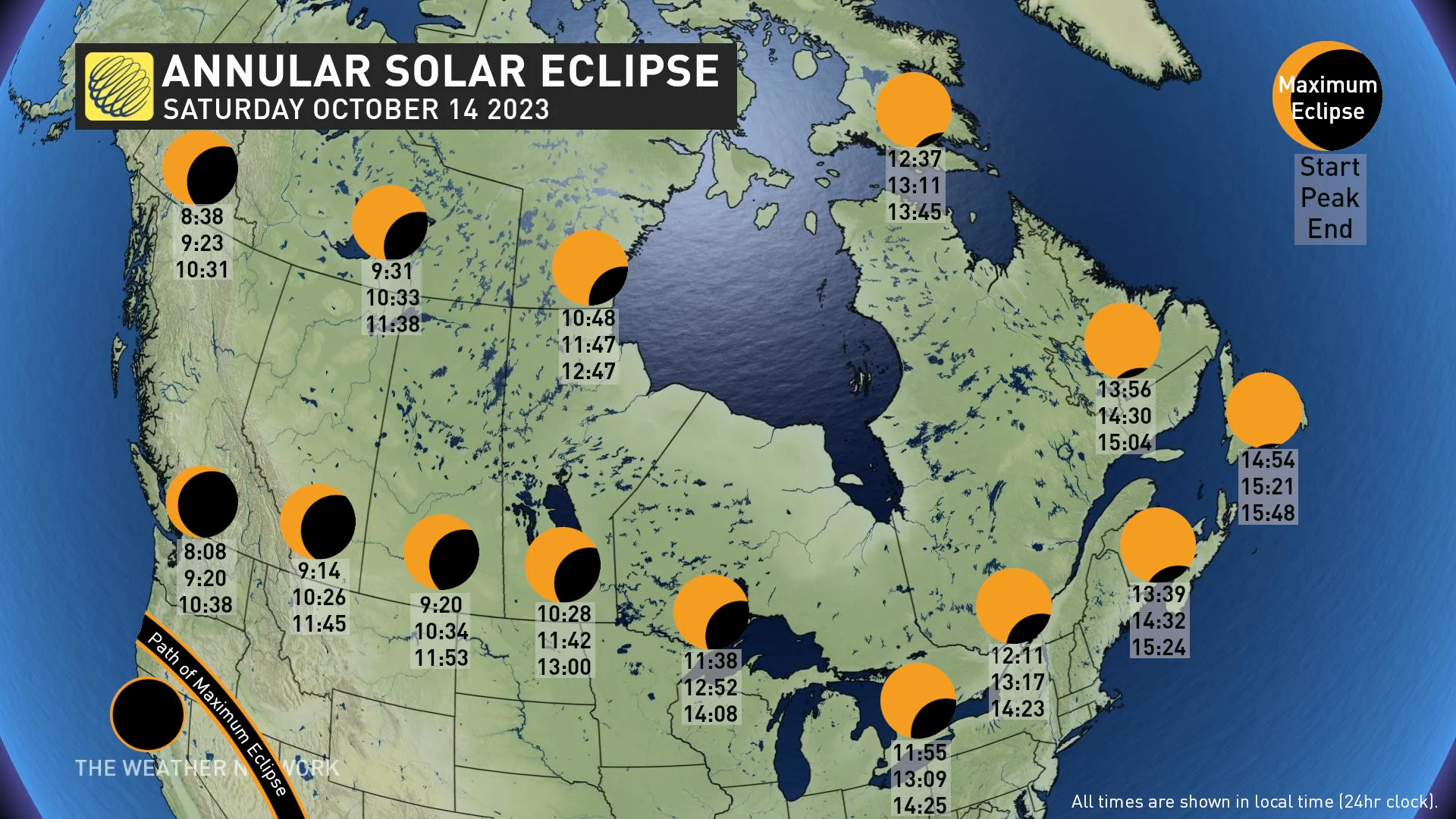
The maximum partial eclipse visible, along with start, peak, and end times for selected cities across Canada, are shown on the map above. A longer list is provided below:
Vancouver: start 8:08 am, peak 9:20 am, end 10:38 am PDT
Kelowna: start 8:10 am, peak 9:22 am, end 10:41 am PDT
Whitehorse: start 8:38 am, peak 9:23 am, end 10:31 am PDT
Calgary: start 9:14 am, peak 10:26 am, end 11:45 am MDT
Edmonton: start 9:17 am, peak 10:28 am, end 11:44 am MDT
Yellowknife: start 9:31 am, peak 10:33 am, end 11:38 am MDT
Regina: start 9:20 am, peak 10:34 am, end 11:53 am CST
Saskatoon: start 9:20 am, peak 10:33 am, end 11:50 am CST
Winnipeg: start 10:28 am, peak 11:42 am, end 1:00 pm CDT
Thunder Bay: start 11:38 am, peak 12:52 pm, end 2:08 pm EDT
Sudbury: start 11:53 am, peak 1:04 pm, end 2:17 pm EDT
Toronto: start 11:55 am, peak 1:09 pm, end 2:25 pm EDT
Ottawa: start 12:06 pm, peak 1:14 pm, end 2:23 pm EDT
Montreal: start 12:11 pm, peak 1:17 pm, end 2:23 pm EDT
Quebec City: start 12:19 pm, peak 1:20 pm, end 2:21 pm EDT
Iqaluit: start 12:37 pm, peak 1:11 pm, end 1:45 pm EDT
Moncton: start 1:39 pm, peak 2:32 pm, end 3:24 pm ADT
Charlottetown: start 1:45 pm, peak 2:35 pm, end 3:24 pm ADT
Halifax: start 1:43 pm, peak 2:36 pm, end 3:29 pm ADT
Happy Valley-Goose Bay: start 1:56 pm, peak 2:30 pm, end 3:04 pm ADT
St. John's: start 2:54 pm, peak 3:21 pm, end 3:48 pm NDT
Note: If your location is not listed, refer to the closest site for approximate times, or search for your community on timeanddate.com.
The weather will be an important factor during the eclipse. So, stay up-to-date on your local forecast to be certain your sky will be clear enough to see it.
If the weather in your area does turn uncooperative, or you wish to see the spectacular 'ring of fire', tune in to the video below for the official NASA broadcast of the event, which begins at 11:30 a.m. EDT on Saturday.
Visit our Complete Guide to Fall 2023 for an in-depth look at the Fall Forecast, tips for the season, and much more!
What is an annular eclipse?
During a total solar eclipse, the Moon appears to completely block the Sun, at least when you are viewing from along that eclipse's 'path of totality'. We see this because the relative distances between Earth, the Moon, and the Sun make the Moon appear at least the same size as the Sun or larger. Thus, as the Moon passes between Earth and the Sun, it is big enough from our point of view to completely cover the Sun's disk.
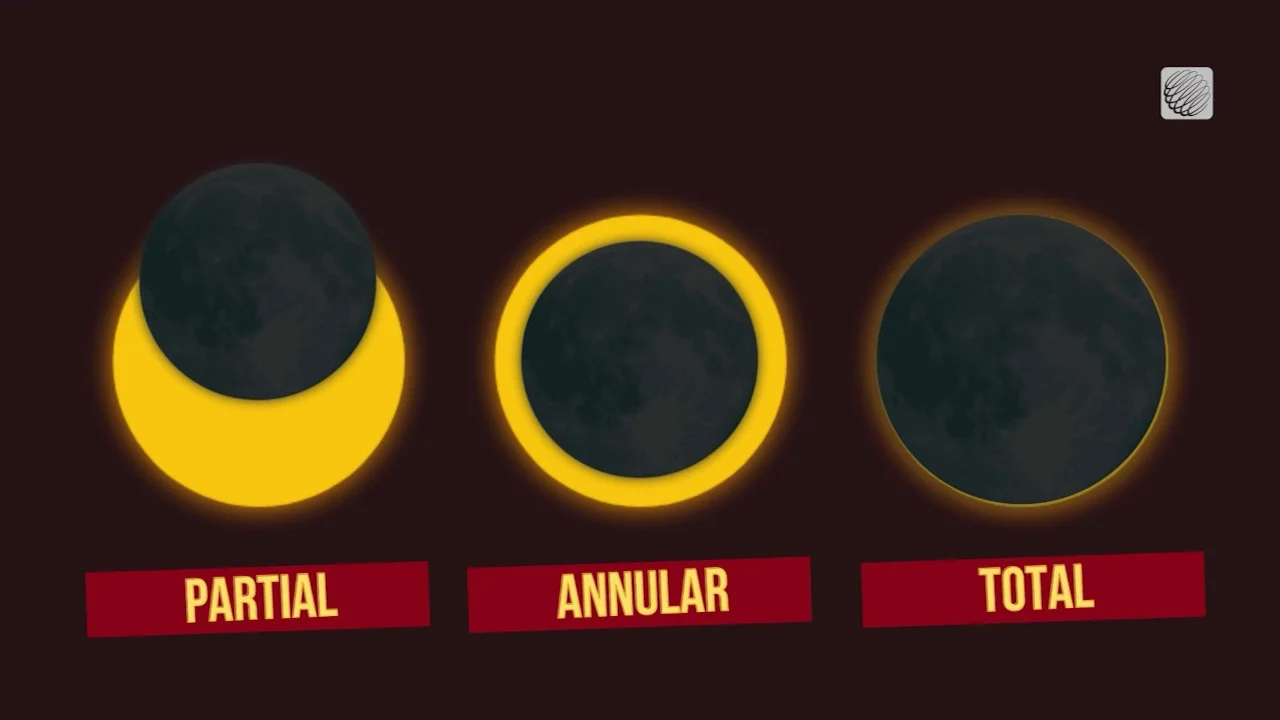
For an annular solar eclipse, either the Moon appears smaller due to being farther from Earth, the Sun appears larger because Earth is closer to it, or both.
As a result, when the Moon passes between Earth and the Sun, it does not appear large enough to completely cover the Sun's disk. Observers along the path of maximum eclipse will see the outer edges of the Sun's disk remain visible around the Moon.
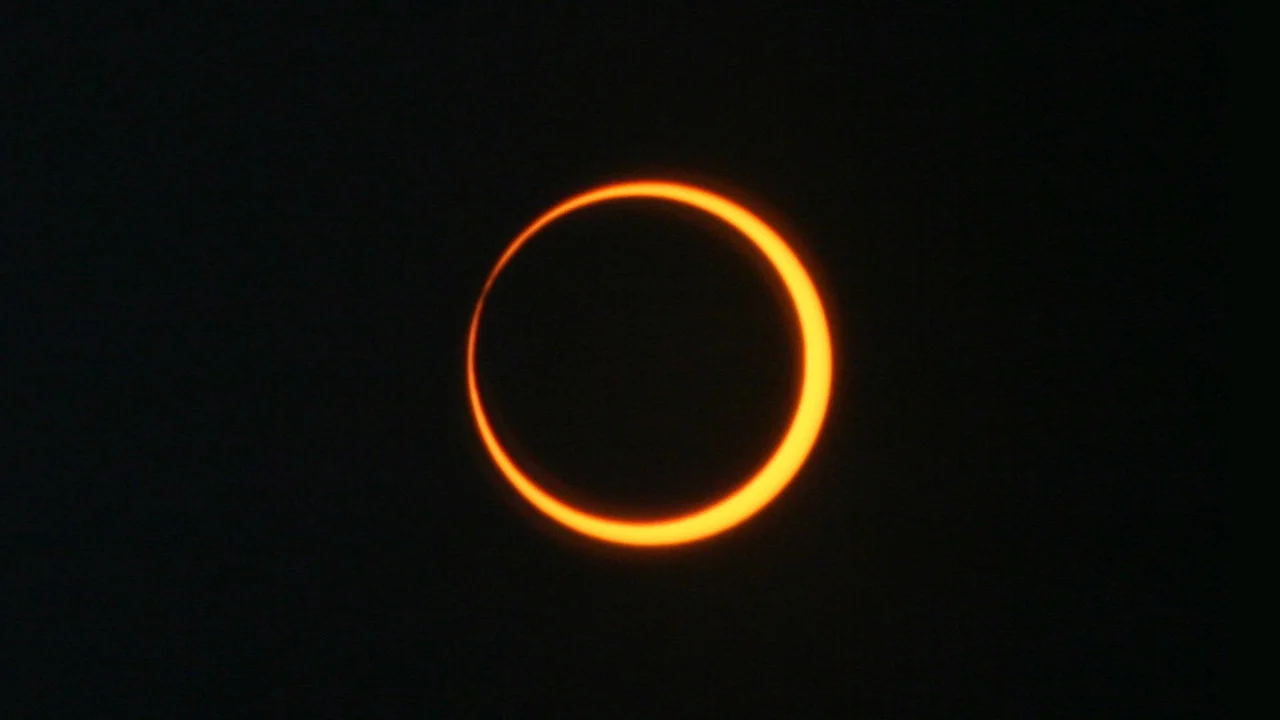
The May 20, 2012 Annular Solar Eclipse viewed at maximum eclipse. Credit: NASA/Bill Dunford
For this reason, annular eclipses are often called 'ring of fire' solar eclipses.
During a partial solar eclipse, or anywhere not along the path of totality or path of maximum eclipse during a total or annular eclipse, the relative distances between the Earth, Moon, and Sun matter far less. In any of those cases, the Moon will only partly cover up one side or the other of the Sun's disk.
DON'T MISS: We are now in the 'season of meteor showers', so don't forget to look up!
Safety First!
Observing a solar eclipse without the proper protection can cause permanent damage to your eyes.
While there are a brief few moments during a total solar eclipse when it is safe to remove eye protection (specifically for those along the path of totality, and only when the Moon is completely blocking the Sun), such is not the case during an annular or partial solar eclipse.
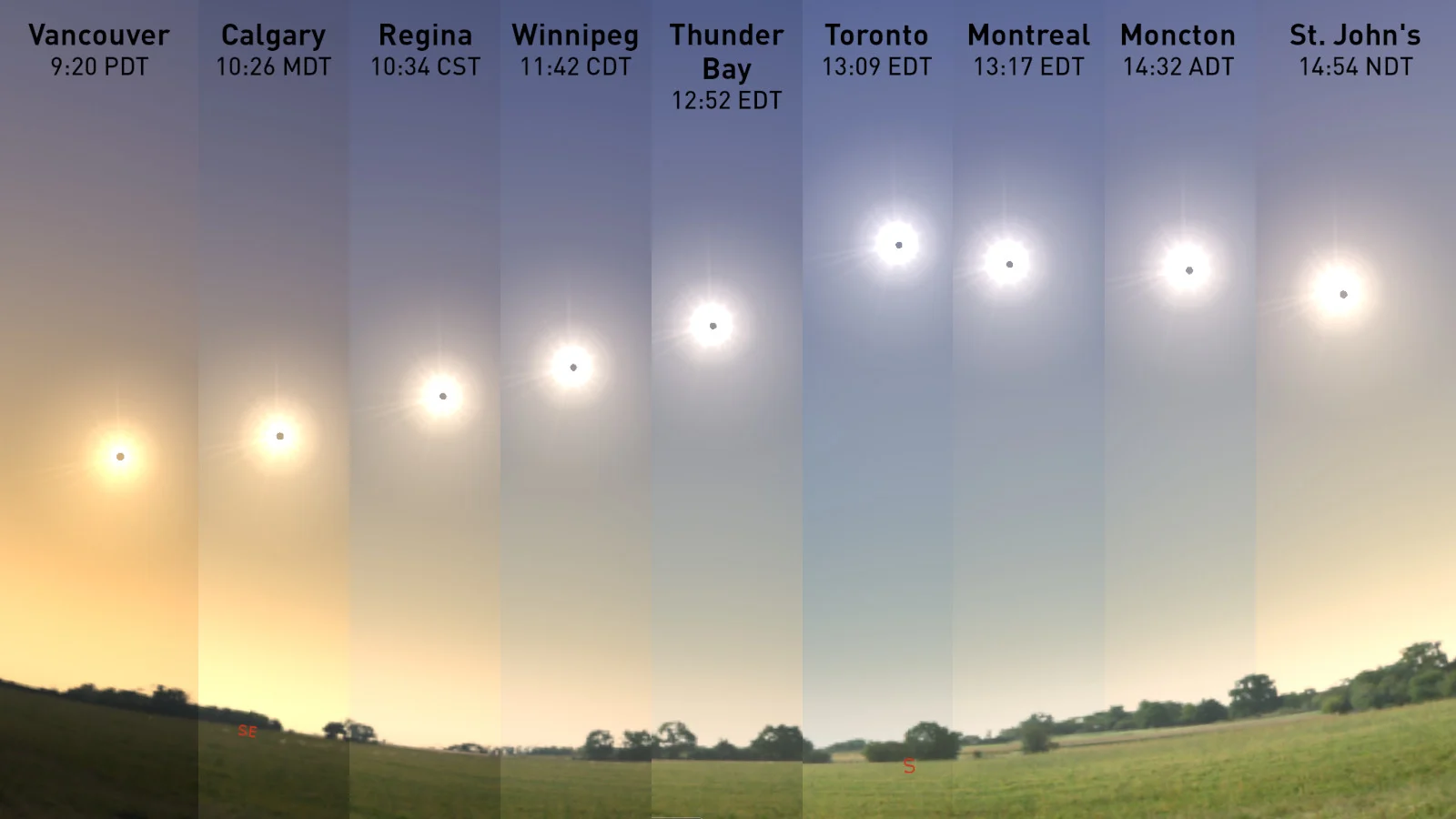
This composite image of the daytime sky shows the view at local maximum eclipse for nine locations across Canada on October 14, 2023. This simulated view includes a dark disk of the Moon in each view; however, only the bright Sun will be visible in reality. Credit: Stellarium/Scott Sutherland
While there is ANY part of the Sun still visible, no matter how small, there remains the chance that the Sun's radiation will damage our eyes. Therefore, here are some safety instructions to follow if you plan to watch the event:
Only use proper solar viewing glasses to directly observe the eclipse. They are typically made of cardstock and have dark, silvery mylar 'lenses'.
Put your eclipse glasses on first, then look up at the Sun. Also, turn away from the Sun before removing them.
When you put them on, you should not be able to see anything through the mylar other than the Sun or a comparably bright light source, such as a direct reflection of the Sun (from a mirror or metal surface), the filament of a lit incandescent bulb, the LED flash or flashlight from your smartphone, a bare compact fluorescent bulb, or an arc-welding torch. If you can see anything else, do not use them. They will not be dark enough to provide you with protection.
Do not use them if you notice scratches, holes, cuts, tears, or any other damage to the mylar. Discard them. They will not be safe.
Avoid all "do it yourself" ideas that claim to be safe for directly viewing a solar eclipse. This includes ordinary sunglasses (even multiple pairs at the same time), neutral density or polarizing filters (such as those made for camera lenses), smoked glass, photographic or X-ray film (whether unexposed, exposed, or developed), so-called space blankets, potato-chip bags, DVDs, etc. None of these will provide you with complete protection.
According to NASA, the only welding glass safe to use for viewing the Sun is of 'Shade 12' or higher, but Shade 13 or 14 is best, which is far darker than any welding glass used for actual welding.
If you do not have a pair of proper solar viewing glasses to directly watch the eclipse, there are indirect ways to see it.
For a simple method, grab two pieces of white paper or cardstock and a push pin. Poke a small hole in one of the pieces of paper with the pin. Stand with your back to the Sun and hold up that paper so that it's next to your head, and you can see the paper's shadow on the ground. Line the other piece of paper up between the first paper and the ground within your line of sight. The small dot of light that becomes visible on the page is a pinhole projection of the Sun, and you can watch the Moon partially cover it throughout the event. Adjusting the distance between the two pieces of paper will bring the Sun into better focus.
The same effect can be produced by holding up an object with many holes in it, such as a straw hat, a pasta strainer, or a slotted spoon. Each hole will produce its own projection of the Sun. Put a piece of paper onto the ground to make these projections easier to see.
A slightly more 'advanced' solar projector can also be made using a cereal box, paper, aluminum foil, scissors, a pin, and tape. The NASA video below provides instructions for this.
Don't worry too much if you miss out on this event due to the scheduling or uncooperative weather. The next solar eclipse visible from Canada will occur less than six months from now, on April 8, 2024.
While most of the country will experience another partial eclipse during the event, a total solar eclipse will be directly visible along a line stretching from southern Ontario to Newfoundland.
(Thumbnail image courtesy Sharon David, who took this image of the partial solar eclipse visible from Kingston, ON, on Aug. 21, 2017, and uploaded it to The Weather Network's UGC Gallery)











